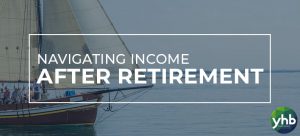

Less than 15 years ago, cash was yielding 5% and bonds averaged an even more enticing total return.
But over the subsequent decade yields have steadily declined, as a byproduct of the financial crisis and persistently sluggish economic growth. This has created a challenging environment for retirees hoping to design a very conservative allocation. How can they extract income from their portfolios in an era of incredibly shrinking yields?
For retirees that are allergic to touching principal, a pure income approach is still the most appealing answer. But a fair portion of retirees can’t afford to subsist on income alone; they need to tap appreciated positions in order to generate a livable cash flow.
Given that yields and market returns often move in different directions, it seems a good option is to take a flexible approach to generating cash flow for retirement. Over the long term in retirement, when yields are attractive, a portfolio’s income may provide most of a retiree’s cash flow needs. But when yields are meager, as they have been for the past decade, selectively pruning appreciated positions to meet living expenses is a way to raise cash while also reducing a portfolio’s risk level.
The old-fashioned way of generating income from a portfolio was building an allocation with an eye toward income production, then relying on whatever income distributions that portfolio’s stock and bond holdings kick off.
On the plus side, such a strategy allows a retiree to leave their principal untouched. Subsisting on income alone also helps ensure that a retiree will never spend all their assets in their lifetime, which can provide valuable peace of mind.
The big knock against an income-centric approach, however, is that income can fluctuate, often substantially, and many retirees are seeking stable cash flows in retirement. That leaves income-minded retirees with two choices: Make do on whatever income their portfolios serve up (which can result in dramatic changes in a retiree’s standard of living) or attempt to keep their portfolios’ yield production stable, even if it entails taking greater amounts of risk. As yields have trended down over the past decade, many retirees have opted for the latter strategy, venturing into higher-yielding stocks and bonds. They may have unwittingly increased the risk in their portfolio as well.
In contrast to the income-centric strategy, a retiree using a total return strategy doesn’t focus solely on income. Rather, the retiree builds a well-diversified portfolio encompassing income-producing and capital-gains-producing investments, then reinvests all income distributions back into the portfolio. As needed, the retiree then harvests appreciated positions to help meet living expenses.
A big positive of the total return approach is that because income isn’t the sole priority, a total-return-oriented portfolio is apt to be better diversified than an income-centric one. Moreover, the process of rebalancing–periodically scaling back the total return portfolio’s appreciated positions–can help reduce a portfolio’s risk level.
A third option that brings together the two previously outlined strategies is the blended option. A retiree builds a total-return-oriented portfolio with a mix of income- and capital-gains-producing securities, then funds living expenses with a mixture of income and rebalancing proceeds. If the portfolio’s organically generated income is insufficient, rebalancing proceeds can make up the shortfall.
A retiree using a blended approach can receive a healthy share of their cash-flow needs via organically generated income distributions and that can provide peace of mind. But because the retiree isn’t going out of their way to generate income, the portfolio is apt to be better diversified and more all-weather than the income-centric portfolio.
In the end, each retiree should consult with their individual financial advisor and choose the strategy that best fulfills their need for income and growth, and which they feel most comfortable.


Randy Beeman has more than 15 years of experience managing financial assets for individuals, retirement plans and businesses. Randy joined YHB | Wealth Advisors in January of 2018 and serves as the Director of Wealth Management. He was a co-founder of the Wise Investor Group in Reston, Virginia and co-hosted The Wise Investor Show on WMAL 630 AM and 105.9 FM in Washington, D.C., and the Midweek Update podcast heard on iTunes. Randy was named to the list of Barron’s “Top 100 Financial Advisors” in the United States each year from 2009 to 2013. He is the co-author of Value Returns: Wise Investing for the Next Decade and Beyond.
